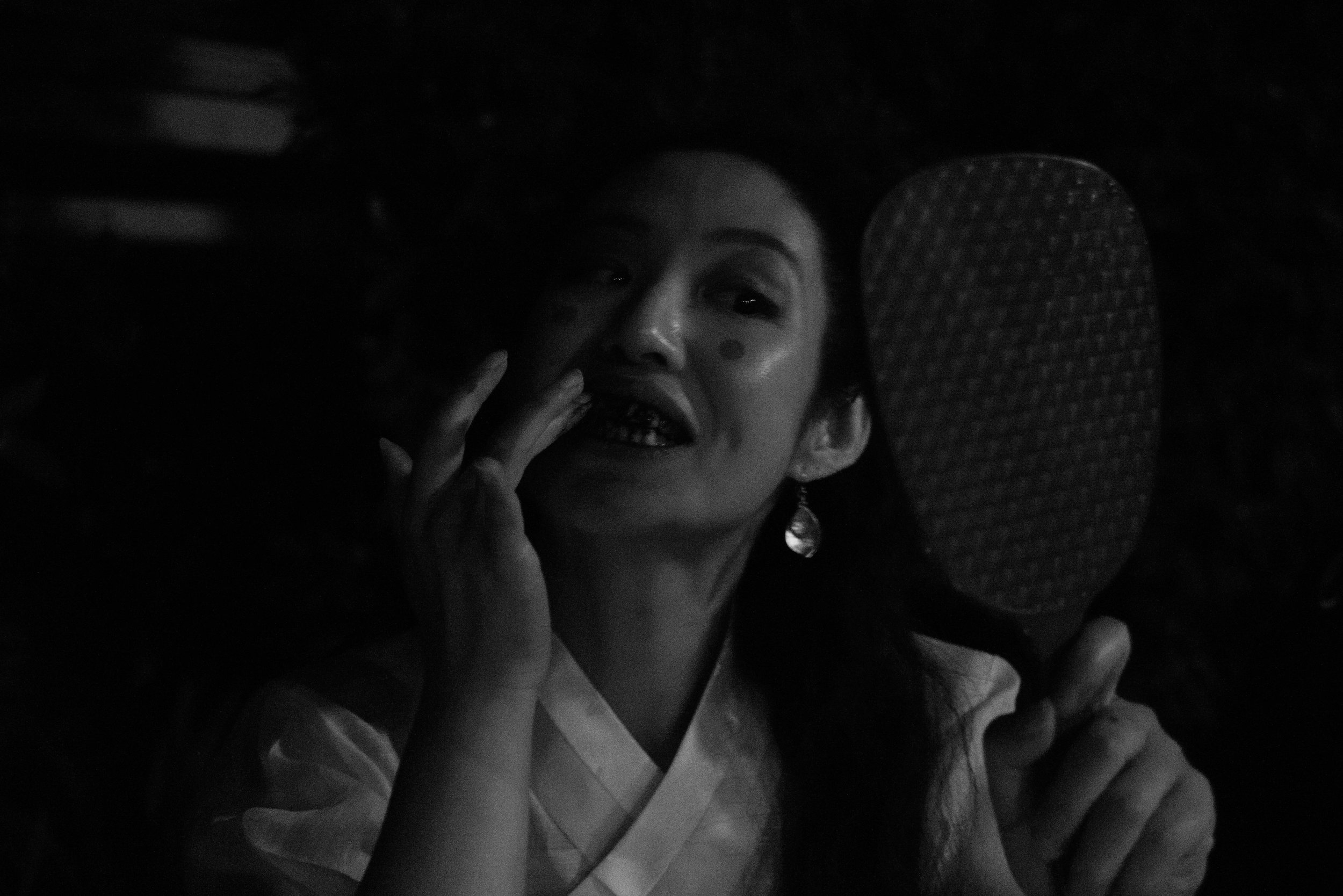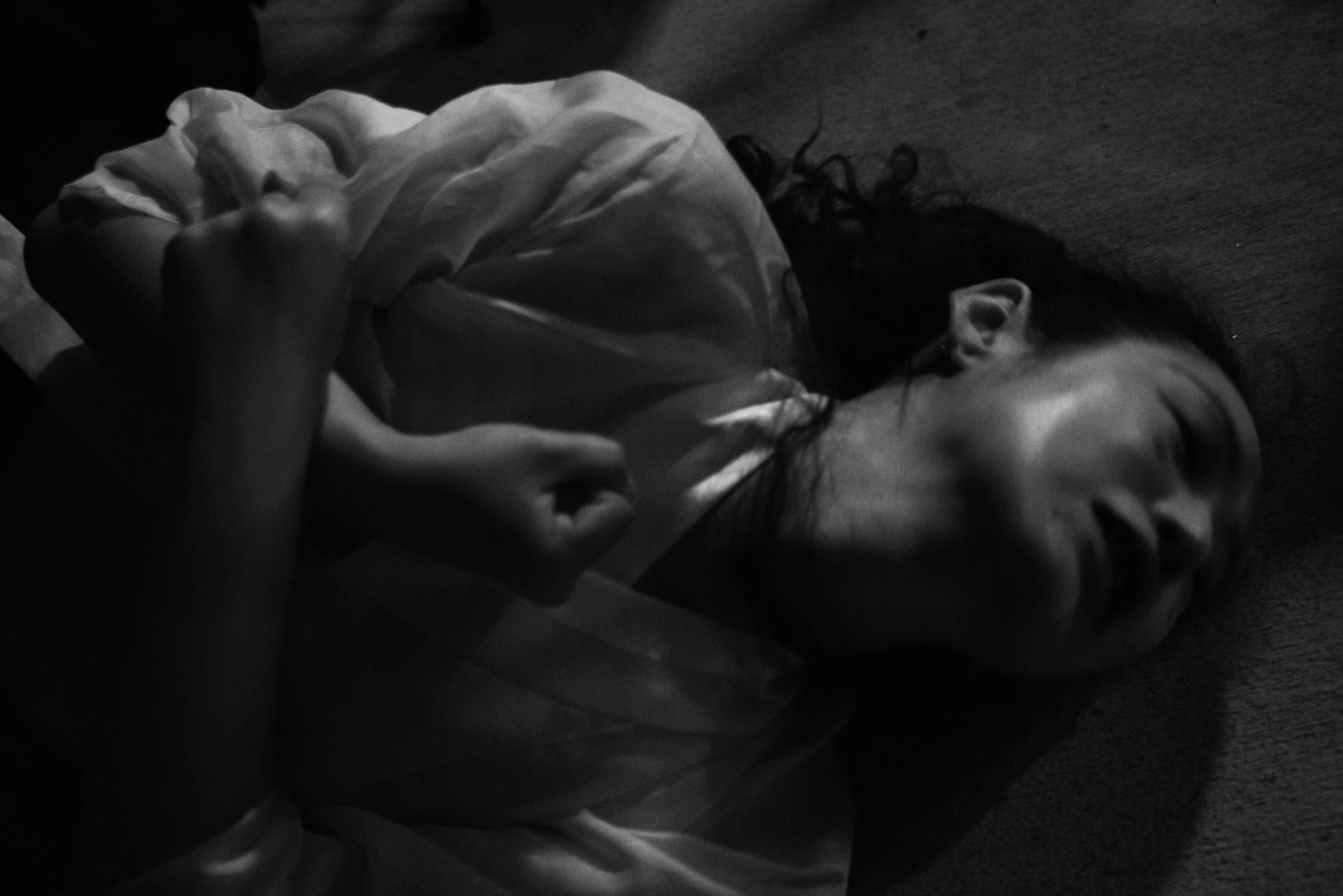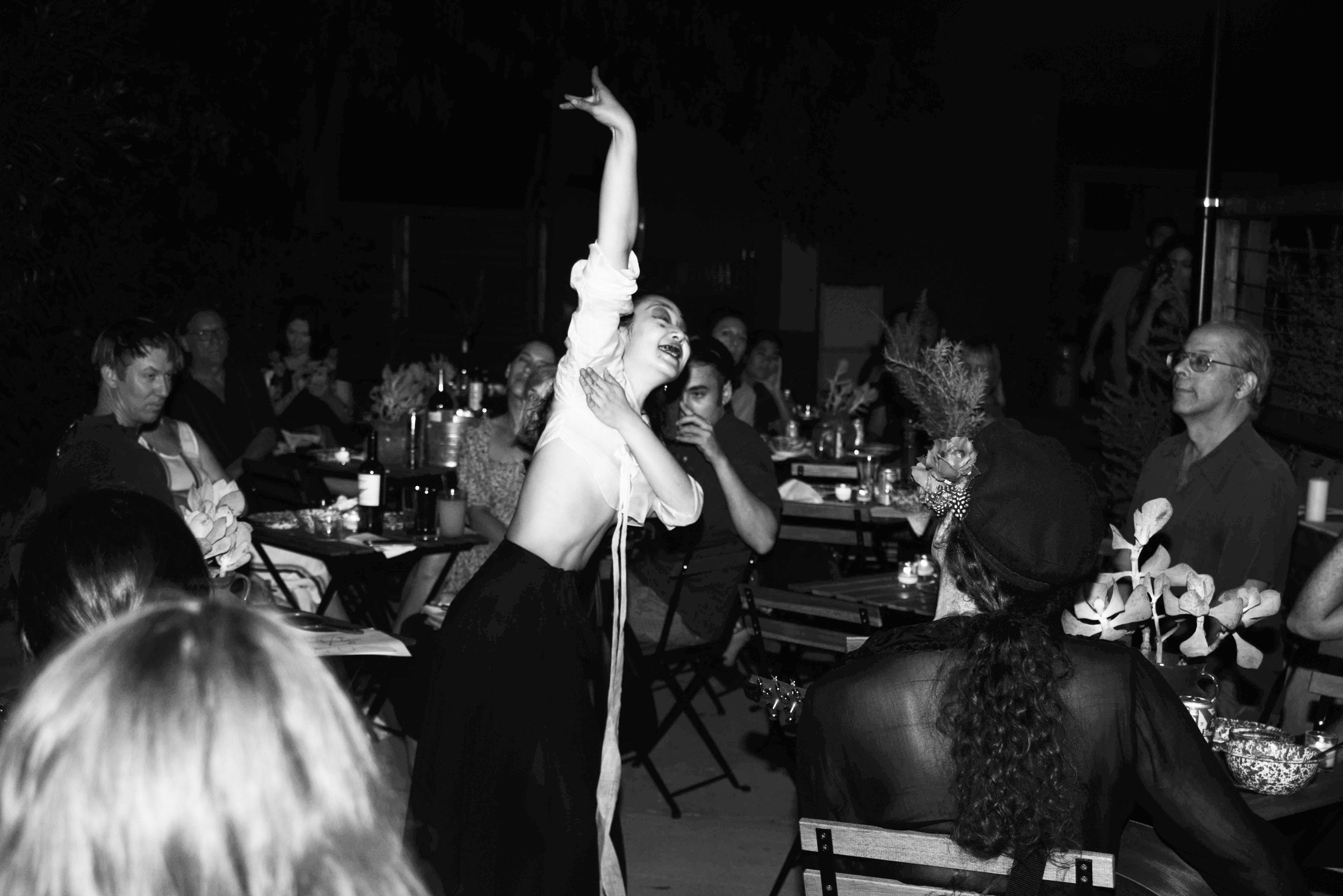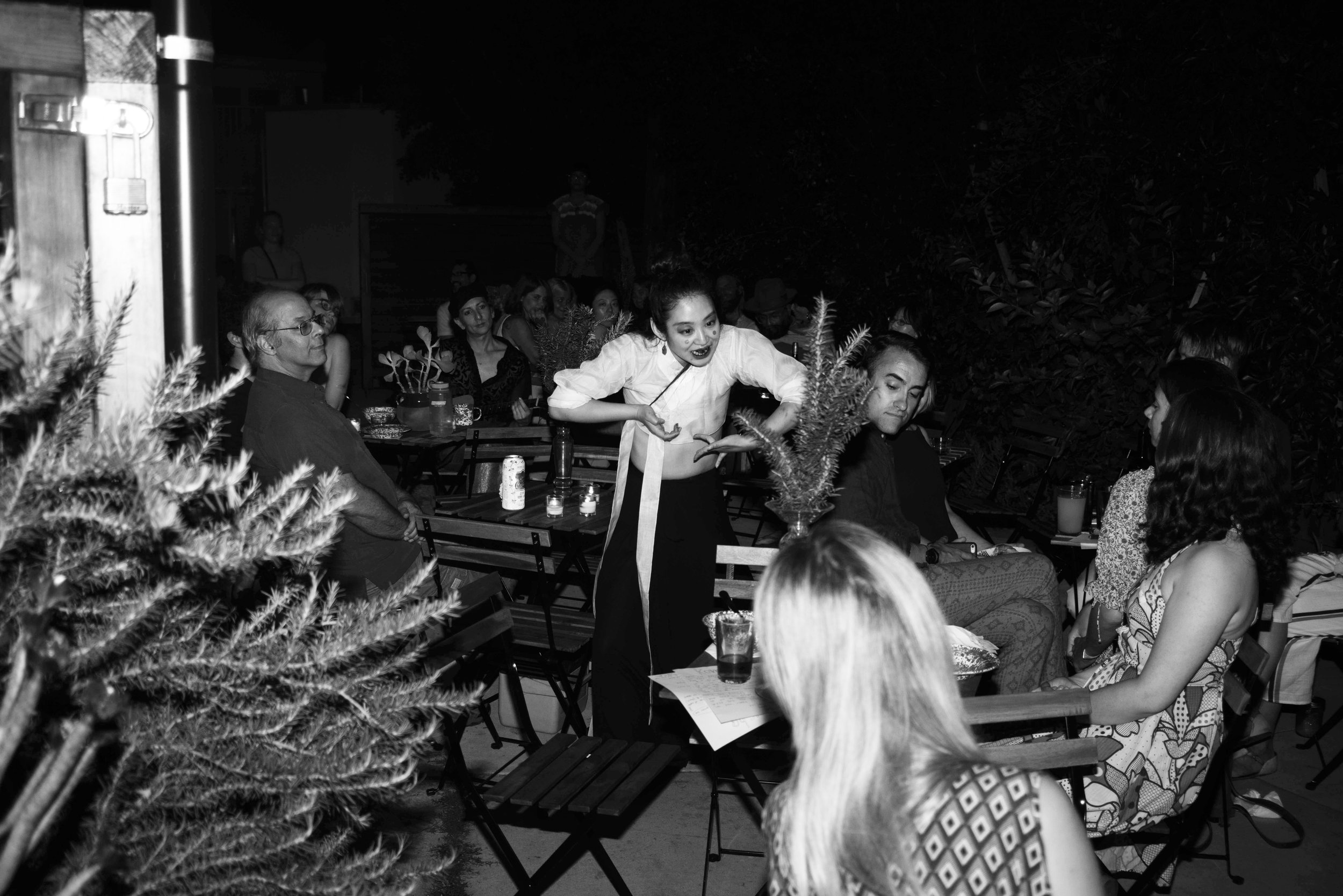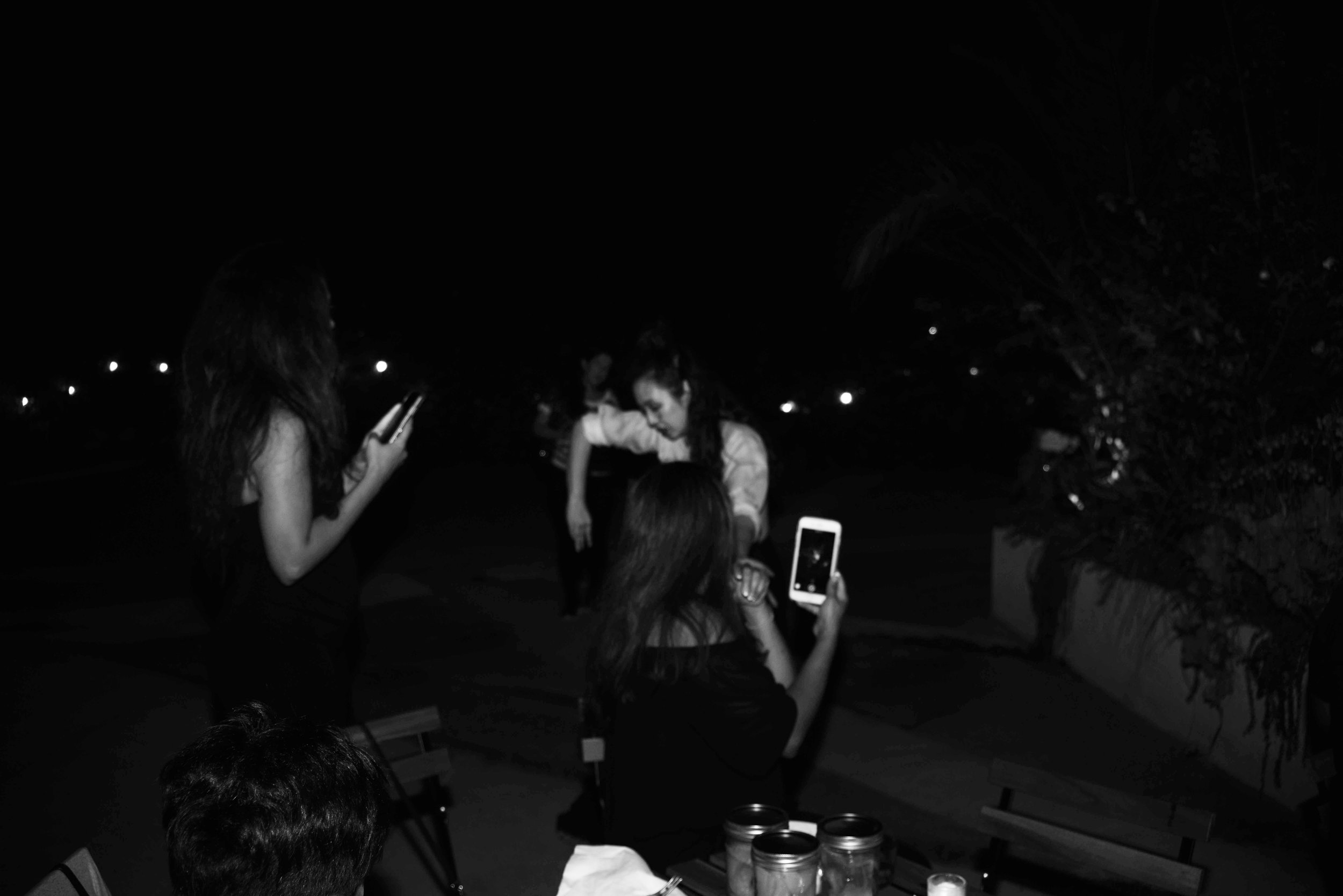Studies on Smiling I (Black Odonata Larva), 2018
Studies on Smiling explores the politics of the smile, especially when performed by first-generation migrant women in the Asian diaspora working in the retail and service industries. The archival studies of Studies on Smiling are inspired by the autobiography of my aunt Kunimo, who at the age of 26 migrated from South Korea to West Germany in the 1980s and worked at a small kiosk her whole life.
The study uses Black Odonata, a fictive dragonfly character with black teeth, to kinetically archive and reimagine the yellow woman’s act of smiling as an economically and socially shaped emotional display. In her larval stage, Black Odonata refuses to morph into an angry dragonfly. Instead, she incessantly performs a wide spectrum of smiles in public, interacting with the audience through this process. Through the interplay between performer and audience, performance and reception, “ficting” and “facting,” her body grows into a performative archive of smiles that reveals a happiness landscape inextricably connected to the oppressive hierarchies of white supremacist, hetero-patriarchy.
Score excerpt:
The performance of happiness is a currency as tangible as the dollar. The yellow migrant woman for whom access to language and other forms of communication that are socially considered of higher value is denied, uses the smile to navigate power dynamics. In a racist and sexist society, the smile becomes her shield of protection and a weapon for survival. Seven days a week, she sells cigarettes, newspapers, and smiles through the small opening of her kiosk.
Meanwhile, the Washington Post reports on groups of women worldwide who are striking against smiling. The women, who call themselves feminists, have announced their reclaiming of unpaid emotional labor through the boycott of the smile.
Black Odonata in Los Angeles. Photography by Christian Alvarez
